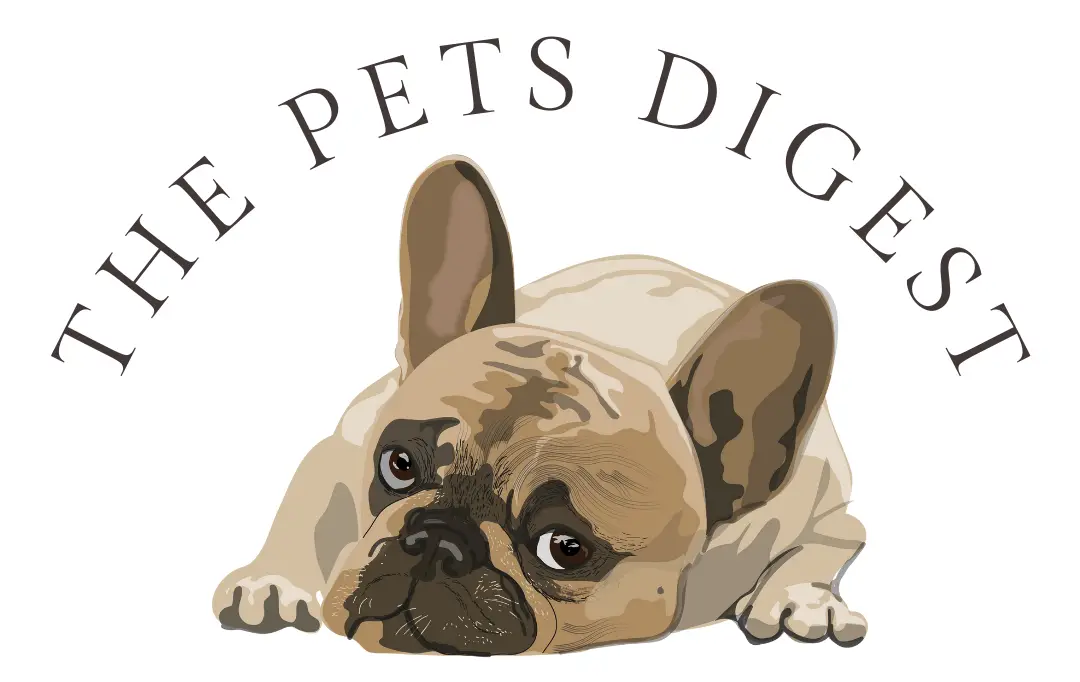‘He needs to get a job!’ I huffed as I shakily lugged yet another cumbersome and heavy $98 bag of Royal Canin Low Fat prescription food for my dog. He suffers from pancreatitis so he’s been on it for a while, but my pockets scream every time I have to purchase it.
I love my Poo and wouldn’t trade him for the world even with all his issues but seriously, why can’t we write our pets off on our taxes (insert crying emoji here), why is this not a thing??
If you’ve ever felt your pooch was a bit of a mooch, then you know exactly how I felt that day lol. So, I researched a little bit about how my dogs could make a little money with their own side hustles.
Thirty nine percent of all U.S. households own at least one dog and 33% at least one cat, according to The Humane Society of the United States. People in the U.S. spend billions of dollars each year on pet supplies and services. Wouldn’t it be great if our pets could contribute to some of that!?
Besides breeding (which I don’t advocate), people don’t know that their pets could actually make a living. Here are a 9 gigs that can get your pet continuous streams of income, some you may even consider passive.

1. Lights, Camera, Acting!
Think Eddie on Frazier (or am I aging myself here).
When movies, commercials and sitcoms need dogs on set they turn to pet casting agencies. Bill Casey, the owner of Animal Talent of Chicago states that your pup should have tons of personality (not be shy) and have extensive training.
Therefore, if you are looking to see your dog on the big screen start training early. Training doesn’t have to cost you a lot either, you can find a plethora of YouTube videos on the subject, pick up books on training or just speak with your local trainer. Now this may be slightly different with cats as they tend to be a bit more head strong, but they are still highly trainable.
As far as dog go, they don’t have to know complicated tricks either if they have an in-depth comprehension of sit, stay and come you’re on your way.
Also, just like with human agencies, you should never have to pay to be represented. If an ‘agency’ asks you for money, it is most likely a scam.
Always keep your pet in mind when starting the process, if they are unhappy, shy away from the lights and cameras then maybe this just isn’t the role for them.
Cost may include:
- Professional pet portraits: a truly professional portrait may cost anywhere from $500-$5,000 for more well-known photographers. If you can find a student or amateur photographer, the price may go down to $250-$500. Of course, you always have the option of taking and submitting your own photos.
- Professional training: Dog training costs varies significantly depending on location, experience and goals. They can range anywhere between $30 – $120 per hour
- Time: While this isn’t a monetary cost, you will have to devote a tremendous amount of time to your dogs growth. Don’t forget you will most likely be the one taking him or her back and forth to auditions.
If you’re looking to break your dog into show business check out these casting agencies:
- Animal Talent of Chicago
- Animal Casting Atlanta
- Hollywood Paws.com
- Mathilde De Cagny Dog Training (this Moose’s ‘Eddie’ from the show Frazier trainer)
2. Dog & Cat Competitions
If you’ve ever watched the AKC National Championship or The Westminster Kennel Club Dog show in Manhattan then you can see that it is not for the faint of heart. But if you have the will, determination and a pet with the same then you would do well!
Dog and cat competitions are another way that your pet could earn money through winning prizes. For the larger shows your pet will most likely need to be a pure breed but there are other smaller competitions that you could qualify for if your pet is mixed or without authentication papers.
Did you know that the largest and oldest cat show is the San Diego Cat Fanciers’ Food and Water Bowl XX?
Unfortunately, though some of these do pay out big bucks like the AKC National Championship’s $50,000 prize, you will have to invest a significant amount of money prior to showing. Another competition, the Dog Agility Steeplechase pays out $10,000. But, while that may seem like a lot, the bulk of the money you win in these cases could be less than what was spent as the overhead is tremendous for larger competitions. So, I wouldn’t go into this to become rich, but if you have the passion then go for it!
There are of course smaller competitions, some online contest are available where you simply submit a photo to enter your pet. Most of them are based on cuteness and voted on by the public. These contest usually award between $1000 – $4000 or other cool prizes, like the Washingtonians contest to win a spa day.
While you most likely won’t get rich from competitions, it is a fun way to make money with your dog.
If you’re looking for contest to enter your pet into look into these:
- The Washingtonian: Cutest Dog Photo Contest
- PetVote Cutest Pet Competition
- The Pet Parade
If you are looking for actual competitions they are all over, but the cost to enter a major one like the AKC would look something like this:
- The major costs comes with the dog, so most likely you’ve already got your pup, but for a show dog they cost anywhere between $5000-$8000 depending on the parents
- Show entry: for the AKC it’s $100, but if you enter in multiple shows per year this can add up. Usually show entry fees range from $25-$30 per show
- Handler fee: $75-$700, depending on your dogs wins and scores. Handling fees also tend to double for big shows like the Westminster, it could be up to $24,000 or more if your dog wins often (looks like I went into the wrong career field, were you thinking the same thing?!)
- Advertising: Did you know that owners pay for their dogs press? This could add on an easy $1000 a month to promote your dog in the trade magazines.
- Grooming: $50 per month
- Conformation class: depending where you go $100-$150
- Attending shows: travel can range depending on your location but typically owners spend about $1000-$1500 per month to get their pooches from show to show
- Pet Insurance: When you have a show dog pet insurance is quite necessary this could cost $1000 annually
Just like pageant moms, pageant pet moms have to put up a lot of money and time upfront to reap the rewards. Is this something you would do with your pet?
If you are seeking cat shows, look into The Cat Fanciers’ Association
3. Research Studies
Research studies often pay small amounts like $50-$100 per study usually via gift cards. Also, many times they will pay for a vet service such as blood work or skin allergy test if it pertains to the study. Most of the studies are noninvasive, which puts a lot of pet parents minds at ease.
If you are looking for studies you can search for ‘canine patient recruitment studies’ or ‘pet research studies’ and a plethora will come up in your area. Purdue University has an entire page dedicated to the recruitment of pets for research studies.
Another huge study is the Dog Aging Project from the National Institute on Aging. Where scientist are looking for 10,000 subjects to determine if a medication can slow down the aging process in dogs. It is a 10 year long-term study and I don’t believe it is paid, but your dog might live longer if their findings are true.
Cost Associated:
- Gas: to get to and from the studies
- Time: Researching studies in your area that may be appropriate for your fur baby
4. Strike a pose! Modeling
Want to see your cat or dog in print? Then, register him or her to become a model.
While it isn’t quite that simple, getting your pet into modeling, much like acting, requires an agent, photos and a lot of time. The costs are pretty similar as well so make sure to take a look prior to delving in.
Your pet should be comfortable in situations around other people, loud noises, and of course bright lights. I have one dog that I know would do well, but my little girl would probably have a panic attack on set. We know our dogs best, so always be realistic with what you think your pet can and cannot handle.
Some agencies to consider are:
- Hollywood Animals in California
- All Creatures Great and Small in New York
- LePaws Agency in California
5. Social Media Superstardom
Social media is a cheap way to get your dog in the spotlight and depending on which platform you choose, you can make a lot of money.
You can make money through advertisements, product endorsements and even get free items to endorse. So, if you have a pup or cat with a unique face meant for the camera start snapping.
By the way did you know the original grumpy cat’s name was Tardar Sauce?
It is pretty much free to you as a start up, especially if you’re using your phone or pre-owned camera to take photos with. So, this is by far one of the cheapest ways that your pet can make a living. But again, you will have to invest some time.
Three of the mainstays of creating a successful social media account are
- Consistency: you must be consistently posting, commenting, liking and following others at least daily, and sometimes throughout the day
- Patience: Your pet might become an overnight sensation, but most likely not. Sorry to break the news for you, but you must be patient while building a following, it could take months or years, so get started sooner than later
- Networking: Online networking is must when trying to build a social media page, so get into groups, talk to other pet parents that are doing the same and grow together
6. Photo Royalties
If you are a professional photographer or already have a ton of quality pet photos on your phone then you may be all set for this one.
While it doesn’t always pay a lot per photo if you upload multiple photos you can bring in a couple extra hundred dollars per month.
Uploading and selling the use of your pet’s photos on stock photo websites is a great way to earn a little cash with your dog or cat as the model. Normally, the payout isn’t great 25 to 50 cents per photo depending on the site, but some will give a lot more in royalties. You can also sell the rights to the photo for more (sometimes $100).
rare cases you will have to pay a subscription fee to get the higher royalties and this eats into your profit, but most are free.
Some sites that tend to pay above average for your photos are:
- iStockphoto
- Etsy
- SmugMug Pro
- 500px Prime
- Shutterstock
7. Blog about your pet
If writing is your thing then you should defiantly be blogging, what are you waiting for? While many blogs start off as fun ways of sharing their pets antics, they can prove to be tremendously profitable.
The profits usually come in the from of advertisements on the blogs, affiliate marketing or selling your own products or services. So make sure that they are appropriate for the audience you are targeting.
You will also want to ensure that your blog has a focus and isn’t scattered all over the place, for instance if you start off focusing on dog treats, don’t all of a sudden start talking about children’s bouncy houses. It will most likely confuse your audience and they will be lost.
The cost associated with starting a professional blog will most likely include:
- Blog template: $50-150
- Hosting such as Siteground or Bluehost: $5 per month average, but depends on your package choice
- Domain names: $10-90, depending on plan
- Ads: if you wish to promote your blog, this ranges and you can use as little as $10 on some social media platforms
- Time: Us writers realize that although it writing may be a passion, it still takes time and you will have to practice patience while your blog grows
8. Start a YouTube channel
Can your dog or cat do cool tricks? If so get the camera rolling!
If you are tech savvy and can make wonderful (or not so wonderful) videos then point the camera at your pooch. If your pet has a special talent or trick you can start their channel and with consistent posting watch it grow.
Your videos will make money on YouTube in much the same was as social media platforms, but mostly through ads when your videos are able to be monetized.
To apply for monetization your videos must have tallied 4,000 hours of overall watch time within the last 12 months and have at least 1,000 subscribers.
9. Product Testing
That’s right those companies that produce dog products have to test them on someone and who better than the pets that will be using them!
Although, did you know most food companies have human dog food taste testers?! Read more about that here in our article – 10 pet jobs you can do without even owning a pet.
Many times you will get paid with samples, but there are some monetary options as well.
Usually this option is free to you as you shouldn’t have to pay shipping and handling.
Some companies to check out are PetSafe or Pinchme.com
Let me know if you have or plan to try out any of these options with your dog or cat!
Also, if you found this post useful or think others would enjoy it please consider sharing on Pinterest or Facebook!

























































































































